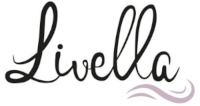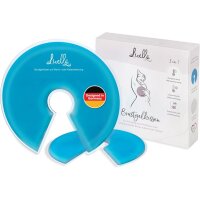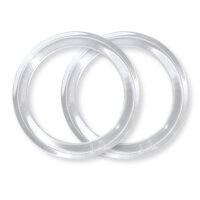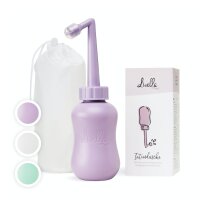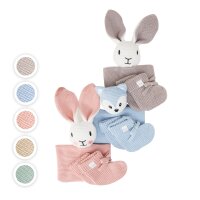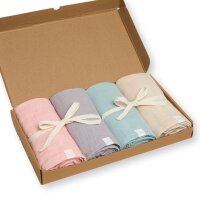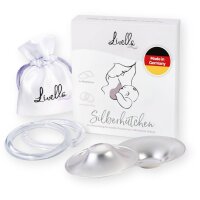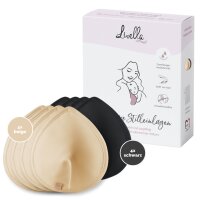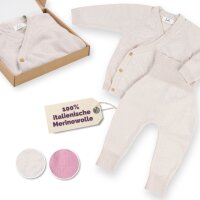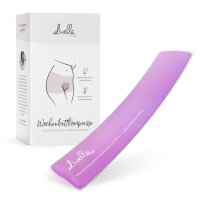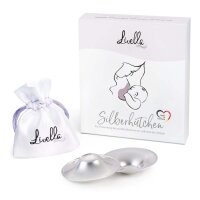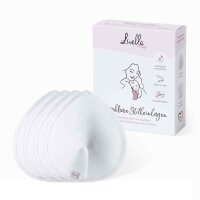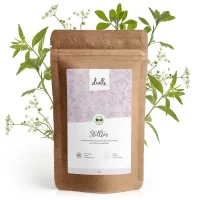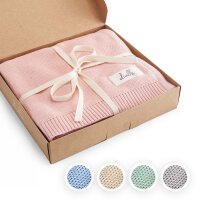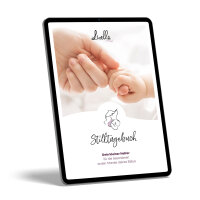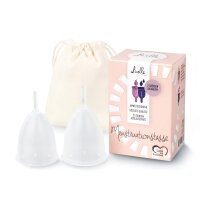Firm, swollen and painful is how many new mums describe their breasts in the first week after birth. While some women don't notice their milk ‘coming in’ at all, others experience an uncomfortable swelling of their breasts as their body replaces the colostrum with larger quantities of mature milk.
Breast engorgement is a common breastfeeding problem that often arises during the first few days after birth. What causes breast engorgement? What are the symptoms? How to relieve engorged breasts?
Table of contents
What is postpartum breast engorgement?
How long does postpartum breast engorgement last?
Possible causes of breast engorgement
Symptoms of breast engorgement: what do engorged breasts feel like?
How do you treat breast engorgement after giving birth?
A final word on breast engorgement
What is postpartum breast engorgement?
Breast engorgement is a painful swelling of the breasts that occurs in the first few days after birth. It is typically associated with the onset of lactation, which is often described as ‘milk coming in’.
How engorged the breasts become differs from one woman to the next. Women whose body only produces small quantities of mature milk in the beginning typically experience little engorgement. Others are less lucky and suffer from severe pain as their body starts making lots of breast milk right from the beginning.
Difference between breast engorgement and blocked milk ducts:
It’s usually quite easy to distinguish early postpartum engorgement from blocked milk ducts. When the milk ducts clog up, it’s typically just one breast that is affected by the swelling. Postpartum engorgement, on the other hand, usually affects both sides of the breast. However, keep in mind that, if left untreated, engorgement can lead to clogged milk ducts and possibly mastitis.
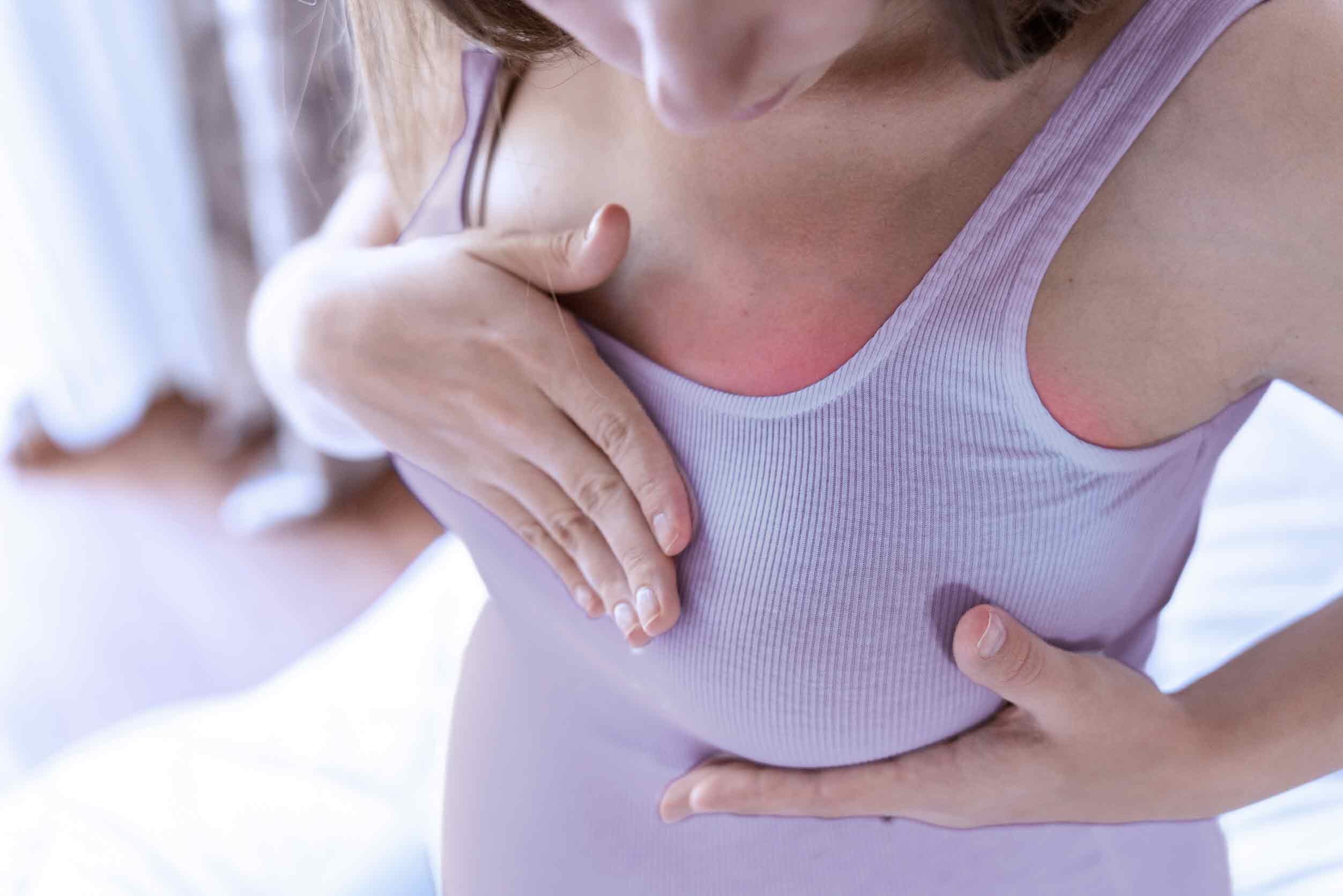
How long does postpartum breast engorgement last?
Early engorgement typically starts between the third and fifth day after birth. But how long does postpartum breast engorgement last?
New mothers vary in how long their breasts are engorged due to their milk coming in. There are different factors that can influence the duration of the swelling. These include:
- the severity of the swelling
- your ability to drain your breast despite your breast tissue being swollen
- the amount of infusions you received during labour
The swelling should start to go down after a couple of days.
Possible causes of breast engorgement
Breast engorgement can have different causes. These include:
- sudden increase in breast milk and lymph fluids in the breast tissue
- increased blood flow to the breasts
- infrequent breastfeeding and missed feeds
- baby not draining the breast properly when feeding
- delayed start of breastfeeding
- impaired let-down reflex
- fluids from IV drips administered during birth
Pressure from a badly fitting bra or tight clothing can also contribute to breast engorgement and worsen the feeling of discomfort.
Symptoms of breast engorgement: what do engorged breasts feel like?
New mothers typically not only want to understand the causes of breast engorgement, but they also want to know how to recognise early postpartum engorgement. What do engorged breasts feel and look like? Here is an overview of the most common symptoms:
- throbbing and swelling
- enlargement
- pressure sensitivity
- demarcation of the veins in the breast tissue
- breast pain
- flattened nipples
- stretched, shiny-looking skin
- warm breast tissue
- redness of the skin
- slightly elevated body temperature
Apart from being painful, breast engorgement can lead to other breastfeeding problems. For instance, if your breast is engorged, it’s more difficult for your baby to latch on to it. A bad breastfeeding latch in turn can lead to sore nipples, blocked milk ducts or even mastitis.

How do you treat breast engorgement after giving birth?
Breast engorgement in the first week postpartum should be treated as quickly as possible to prevent further breastfeeding problems. The most efficient treatment for engorged breasts is to keep emptying them even if it’s painful.
Here are a few tips:
- Massage your breast: Massaging your breast is an easy self-help method for new mothers to get their milk to flow better when their breasts are hard and swollen. Ask the staff at the hospital to show you how to best massage your breast to stimulate milk flow. If you’re discharged from the clinic before your milk comes in, you can also get your midwife to show you some massaging techniques. One of the techniques used for postpartum breast engorgement is reverse pressure softening.
- Use hot therapy: Another way of stimulating your milk flow is to apply a warm compress or heat pack to the breast. Warmth stimulates the let-down reflex and dilates the milk ducts, which makes it easier for the milk to flow. Using special breast gel pads with a round opening for the nipple will allow you to continue hot therapy even during feeding sessions.
- Breastfeed frequently: The general recommendation for breastfeeding in the first few days after birth is to breastfeed between eight and twelve times every 24 hours. This gets your milk production off to a good start and stimulates your let-down reflex.
- Express milk by hand: If breastfeeding is too painful, you can express milk with a breast pump or by hand. Ask your midwife or lactation consultant to show you how to do this. You can then feed the expressed milk to your baby with a spoon or a small cup.
- Allow for plenty of skin-to-skin contact: Direct skin-to-skin contact not only activates your baby’s natural breastfeeding reflexes, but it also stimulates your let-down reflex. When combined with laid-back nursing, intense skin-to-skin contact creates the best possible conditions for your breast milk to flow despite breast engorgement.
In the meantime, you can try out these tips to relief engorged breasts:
- Cool your breast: Applying a cold pack or a cold compress to your breast not only helps relieve the throbbing feeling of pain in your breast, but can also help reduce the swelling.
- Take painkillers: If you experience severe pain from breast engorgement, you can also take painkillers. Painkillers that are compatible with breastfeeding include ibuprofen and paracetamol, among others. Read more about taking medication while breastfeeding in our related blog article.
If your breasts remain engorged for more than a couple of days, you should seek professional help. Make an appointment with your GP to have your breasts checked to find out if the engorgement is caused by something else.
A final word on breast engorgement
Is breast engorgement normal postpartum? To a certain extent, yes. It’s not uncommon for the breasts to become engorged in the first few days after birth. Early postpartum engorgement is typically due to the milk coming in, which means that the body starts producing larger quantities of mature breast milk that replaces the colostrum. Depending on how quickly milk production picks up, it’s possible for the breasts to become engorged, hard and painful.
The most important thing to remember about breast engorgement is to keep emptying your breasts, even though it might be painful. Otherwise, the engorgement could lead to more severe breastfeeding problems like blocked milk ducts or even mastitis. Cold breast gel pads, breast massages and painkillers can help relieve engorged breasts.
If the swelling persists for more than a couple of days despite your efforts to empty your breast, you should seek professional support from a midwife or lactation consultant and consult a doctor if necessary. In most cases, however, early postpartum engorgement is a temporary condition that will improve naturally as your body adjusts milk production to your baby’s feeding needs.
References
- Brustmassage und Handentleerung als Hilfsmittel im Milcheinschuss (stillen-institut.com)
- still_empfehlung.pdf (uni-hamburg.de)
- Microsoft Word - 015-071l_S3_Therapie_entzündlicher_Brustentzündungen_Stillzeit_2013-02.docx (stillen-institut.com)
- Verstärkte initiale Brustdrüsenschwellung (schmerzhafter Milcheinschuss) - Still-Lexikon
- Engorged Breasts - avoiding and treating - La Leche League GB
